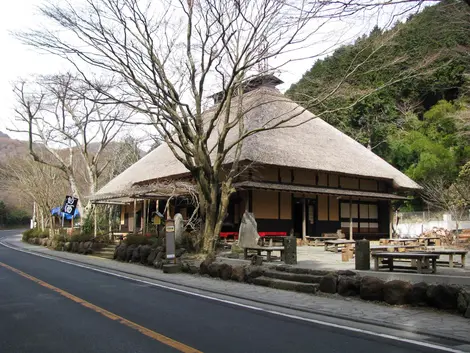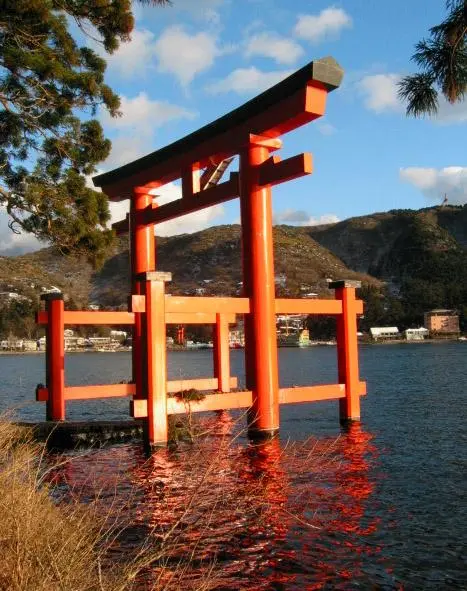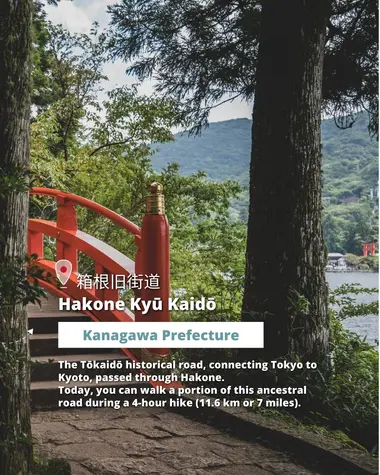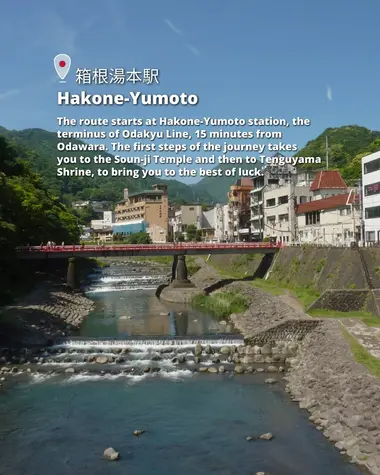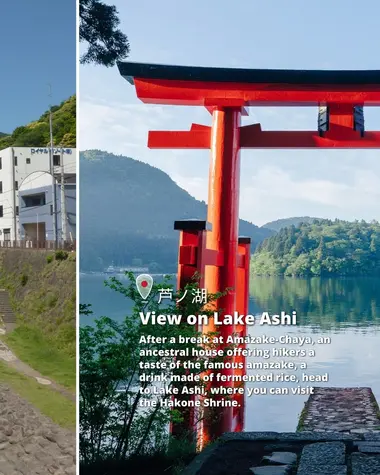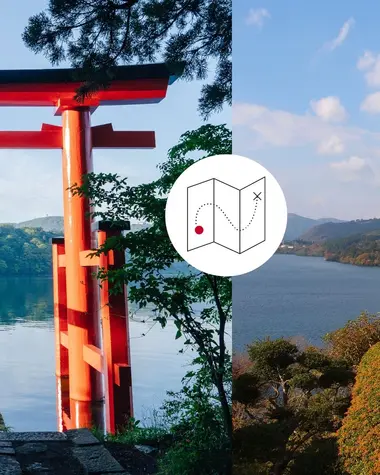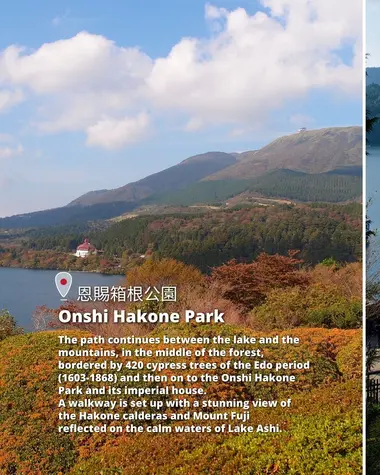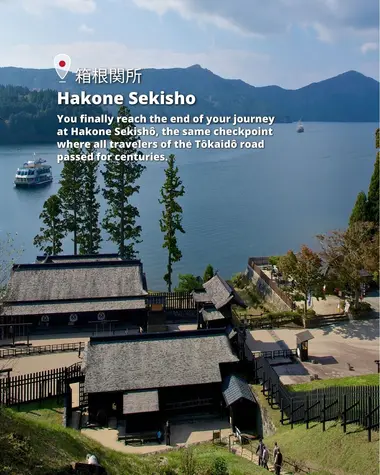Hiking the Historic Tokaido Trail: Hakone Kyu Kaido 箱根旧街道
- Published on : 17/06/2019
- by : J.L.
- Youtube
Historic Hike and Window to Feudal Japan
The historic path of Tokaido was traveled for centuries by the Japanese. You can take the same path and follow in the footsteps of the pilgrims and Samurais between forests, magnificent landscapes and culinary specialties.
The ancestral way of walking
For a very long time, the Hakone mountains were a natural barrier separating the east from the west of Honshu. During the Edo period (1603-1868), the Tokugawa shogun decided to build a road on an existing path. Starting from Nihonbashi, in the heart of Tokyo, and going to the city of Kyoto, this historic route passes through Hakone. More precisely between Odawara, in the prefecture of Kanagawa, to Mishima, in the department of Shizuoka, passing through the Hakone pass, culminating at 893 meters above sea level, for a 32-kilometer journey.
Later, the Tôkaidô road became a road route for motorized vehicles but also a rail route with the JR lines and the Shinkansen, the Japanese high-speed train. However, there are still some historic parts in the forest, traveled by Japanese hikers, as their ancestors did.
The most popular and practiced route is the portion that begins at Hakone-Yumoto Station, the terminus of the Odakyu Line, 15 minutes from Odawara, to Hakone Sekisho, an old checkpoint on the historic route. By going to the edge of Lake Ashi, the atmosphere of certain portions of this hike takes you back to the distant era of feudal Japan.
This route makes you walk for about 4 hours over 11.6 kilometers.
- Read also: Hiking in Hakone
The path of wonders
From Hakone-Yumoto station, the first steps will be the temple of Sôun-ji and then the Tenguyama sanctuary.
After the village of Sukumogawa, you see the ground become big cobblestones covered in moss. They date from the Edo period, from the very first hours of the construction of the Tokaido road. Finding the ground too slippery on the slope, the Shogun Tokugawa had for a time built a passage with bamboo, which was renewed every year.
Some parts of the journey are along the road, such as the one passing through Hata-Juku, where you can discover the art of marquetry, a precious and meticulous specialty of the region, with local artisans.
Ancestral Japanese culinary specialty
The path then continues to reach Amazake-chaya. An ancestral house offers hikers the opportunity to taste the famous amazake, a drink made from fermented rice.
Very nourishing and without alcohol or added sugar, this beverage gives you a healthy boost to complete the rest of the hike.
Very hot in winter, or cold when it's hot, you can accompany it with a matcha mochi in case of a little hunger. The house has been serving its specialties for 400 years. In Amazake, you will taste a piece of Tokaido history!
A final by Lake Ashi
Refreshed, the progression continues to see Lake Ashi at the level of Moto-Hakone. A passage through the Hakone sanctuary is therefore essential! This Shinto shrine was founded in 757 and is known for its large red torii with its feet in the waters of the lake that can be found in souvenir photos of Hakone, accompanied by Mount Fuji in the background.
- Read also: Hakone Shrine
The path continues between the lake and the mountains, in the middle of the forest, bordered by 420 cypress trees from the Edo period (1603-1868) and then Onshi Hakone Park and its imperial house. A promenade is laid out with a magnificent view of the calderas of Hakone and Mount Fuji reflecting on the calm waters of Lake Ashi.
Then, you finally arrive at the terminus of your path at Hakone Sekisho, the same checkpoint that all travelers on the Tokaido road passed for centuries.
Note that you can only do a small part of this ancestral Tôkaidô road on foot, the rest will have to be done by bus or taxi.






